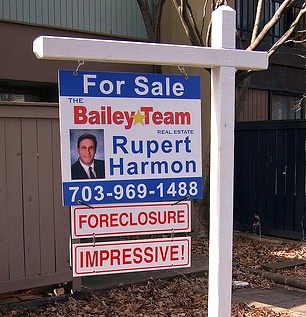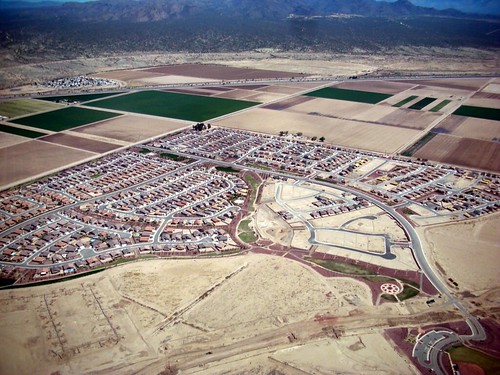A friend's manifesto for free-market sustainability

Posted April 19, 2012 at 7:30PM
As many readers have probably noticed, there are those who now contend that planning walkable, green communities is a big-government sponsored, gross violation of your property rights, all orchestrated by none other than the United Nations. (Amazing, isn’t it?) My friend John Holtzclaw, an urban analyst of some repute (almost two decades ago, John began the analysis that exposed the high household costs of sprawl-related driving), has some answers. John understands that, actually, government regulation (supported by financial interests) has tended to favor sprawl, not walkable neighborhoods. Yes, we should be wary of some regulation; but not for the reasons that the fear-mongering crowd suggests. A more sustainable future lies in unleashing choice, not restricting it.
John has laid it out in an article published earlier this week in the Sierra Club Compass. With his permission, I am now sharing it in its entirety with you:
During nine years as a nuclear engineer in the 1960s for Westinghouse and GE, I visited many vibrant and exciting cities. Yet, while Paris, Copenhagen, Amsterdam, Rome, Istanbul and Cairo boomed, NYC, DC, Chicago and San Francisco declined as folk abandoned vibrant sidewalks for the suburbs. Having lived most of my life in sprawl, I puzzled and lamented this, and returned to grad school to find out why. I discovered that the decline was not accidental, but government policy to build suburbs condemning you to drive every trip. An auto and oil company plot? Well, yes!
Since WWII, our government and the banks have worked to destroy central cities and limit citizens’ choices:
- Federal housing programs, including mortgage guarantees and tax write-offs, have pumped trillions of dollars into housing construction. Moreover, central cities were red-lined, denying loans to fix leaky plumbing or roofs, to restore or to buy housing. Consequently, buildings deteriorated. These policies have softened recently, but financing housing integrated with local shopping is still a challenge, and housing with less than one parking place per unit is illegal in many places.
- Zoning laws, propagated by Secretary of Commerce Herbert Hoover, mandated low-density single-family housing in order to qualify for federal home loans. And mandated up to five vehicle off-street (garage) parking per house, wide streets, and big side- and front-yard setbacks, while prohibiting cafes or markets in residential areas. Some even prohibit sidewalks. Walking is dangerous and difficult – effectively illegal.
- Federally funded freeway construction bulldozed vast tracks of central city housing and commerce, destroying and dividing vibrant neighborhoods while bringing in hazardous traffic, noise, and pollution. These same freeways connected central city jobs to vast stretches of farmland and natural areas, facilitating speculative housing development, while loading infrastructure costs onto the rest of the community. Taxing central city residents to subsidize sprawl.
 Unfortunately, residents of the resulting sprawling communities have to drive every time they want a loaf of bread, or to visit a bank, leaving them stuck with $1000 or higher monthly auto costs. This drove many into poverty and left them underwater when the housing bubble burst. Many sprawl communities are impoverished due to unaffordable maintenance for deteriorating street, water, and sewer systems.
Unfortunately, residents of the resulting sprawling communities have to drive every time they want a loaf of bread, or to visit a bank, leaving them stuck with $1000 or higher monthly auto costs. This drove many into poverty and left them underwater when the housing bubble burst. Many sprawl communities are impoverished due to unaffordable maintenance for deteriorating street, water, and sewer systems.
And when their children grow up, they want to live in communities which give them trip choices, including trips short enough to be walked or biked, with good, reliable buses, trams and subways. They also want to be near cafes, jobs and shopping so they can live richly rather than spending their days driving. A new study from US PIRG confirms that younger folks are driving less, preferring other ways to get around.
Cities were shaped by free market forces before sprawl zoning. They were dense, walkable and convenient. Yes, zoning is needed to prevent meat-rendering plants, refineries, power plants and roads with heavy diesel traffic near residential areas. But why outlaw cafes, clean jobs, shopping, and recreation? Smart Growth restores these vibrant neighborhoods and vastly reduces travel costs.
Many suburbs and neighborhoods built up before the car dominated planning are fairly compact. Just widening sidewalks, narrowing lanes and intersections, adding bike lanes and rezoning for apartments, condos and local stores can increase their convenience and give residents healthy and pleasant alternatives to driving. Repurposing suburban shopping centers, with condos, apartments and a narrow street network replacing the parking lot, can restore vitality and provide a convenient neighborhood for residents and nearby sprawl.
Yet, when our communities try to reform zoning laws in order to allow the market to again produce convenient communities for us, someone is organizing people to disrupt and stop progress. Could it be that Big Oil wants to keep Americans addicted to fossil fuels?
-- John Holtzclaw, volunteer co-lead for the Sierra Club Green Transportation Campaign
Related posts:
- How the evolving housing market will help sustainable communities (April 4, 2012)
- Data summaries show walkable communities are good for our health, and for business, too (April 13, 2012)
- Biking, walking to school illegal in Saratoga Springs (July 8, 2009)
Move your cursor over the images for credit information.
Please also visit NRDC’s Sustainable Communities Video Channel.
